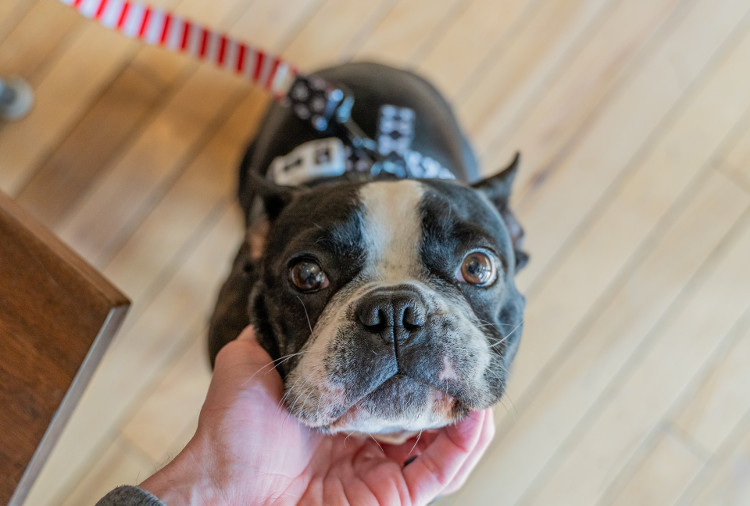![]()
Canine Atopic Dermatitis and Feline Atopy: A Common Dermatological Presentation
Environmental allergy is quite common in feline and canine dermatological patients, in fact more common than food allergy. The medical term the condition in dogs is canine atopic dermatitis (environmental allergy), whereas feline atopy (or, non-flea, non-food allergic dermatitis) is the commonly used term for cats.
Allergy Immunotherapy Options and Benefits to Allergic Pets
Allergy immunotherapy (or allergen desensitization) is the mainstay treatment used for managing dogs and cats affected by environmental allergens. In fact, the only specific treatment for environmental allergy is allergen immunotherapy (‘layman terms’ include allergy shots, allergy injections, or allergy oral drops).
Allergen desensitization is a well documented, safe and natural way (using natural extracts of allergens affecting the pet) of treating the underlying cause of allergies in pets. Environmental allergy may be due to a variety of environmental triggers including grass pollen, tree pollen, weed pollen, environmental molds, house dust mites, human dander, etc.
Use of this mode of treatment helps pets affected by allergies in multiple ways, including:
- Decreased need for ongoing drug therapy to manage symptoms
- Decreased secondary infection of ears and skin, leading to less frequency antibiotic therapy
- Decreased cost and adverse effects associated with frequent or ongoing drug therapy
- Improved quality of life for the pet and their family
- Halting or slowing down progress of allergy signs, which can be progressive with age
Traditional (Conventional) Allergy Immunotherapy
Allergy immunotherapy can administered in pets using either sub-cutaneous injections, or oral drops administered by mouth. The treatment involves 2 phases, including the build-up or loading phase, where allergens are introduced to the pet’s body in small increments in order to help reach the second phase of desensitization therapy, called the maintenance phase.
Once maintenance phase is reached, it is continued for at least a few years (generally for life) to help minimize symptoms caused by allergies in a pet. This treatment allows the pet to be more comfortable long term.
The “traditional” build-up or loading phase of immunotherapy involves weeks to months of increments in recommended dose of allergy injections or allergy oral drops. This can be challenging for some pets and pet owners as it not only involves administering (by injections or oral drops) allergens to the pet frequently, but also the need to monitor the pet for a flare up in allergy symptoms related to immunotherapy or other factors. Seasonal factors, diet changes, and travel plans are a few of the possibilities that may make this build up phase and monitoring tricky for the pet owner.
Rush Immunotherapy: A Procedure to Help Client Compliance and Faster Patient Benefits
Allergies in pets can be complicated and need a fair amount of effort to manage in general. Thus, there is a need to make the “traditional” build up phase of immunotherapy easier for the pet’s family, if possible. Rush immunotherapy is one such tool in the veterinary dermatologists’ arsenal which can help make management of atopic dermatitis simpler for the involved family. Rush immunotherapy initiation is a well-documented and safe alternative to the traditional build up phase. In rush immunotherapy induction, the increasing dose of injections are given in one day, as opposed to the same process being performed over weeks to months. The procedure helps move to the “maintenance phase” faster so that subsequent injections can be given less frequently during the maintenance schedule.
In dogs, rush immunotherapy has been documented to be well tolerated while performed under supervision by trained personnel. The patient needs to be hospitalized at the vet clinic for the day, in order to help monitor signs of possible adverse effects (of the few adverse effects reported, increased itch is the most common adverse effects noted). Rush immunotherapy procedure has also been reported in cats and is similarly considered a safe procedure.
Rush Immunotherapy at VetDERM Clinic and Benefits of the Treatment
At VetDERM Clinic, rush immunotherapy is available for dog as well as cat patients that are being initiated on allergy desensitization therapy. Rush immunotherapy is considered to be be a good choice for:
- Clients having concerns about following the induction schedule because of the changes in volumes and vials of allergens involved
- Clients wanting to reach the less frequent maintenance schedule sooner (instead of have to work on reaching the maintenance phase for weeks)
- Patients requiring rapid hyposensitization because of particularly severe or life- threatening allergic reactions such as to venomous insect bites.
- Patients having significant allergic signs to environmental allergens where drug therapy for comfort is either not working or not desired.
In a double-blinded study, the maximum improvement in clinical signs was reached after 6.8 months for rush immunotherapy patients as compared with longer onset of maximal benefit (9.2 months) in patient receiving classic or traditional immunotherapy. While a faster rate of maximal benefit was noted, the study findings did not reach statistical significance.
This procedure can only be performed after allergy testing (intra-dermal allergy testing and/or blood based allergy testing) and confirmation of the exact environmental allergens affecting a pet. Among the other benefits listed, as rush immunotherapy may result in a faster response to desensitization therapy in pets, this is be another reason to consider this protocol for allergic pets.
Helping allergic pets get back on track to faster comfort and well being is key for their happiness levels. After all we want all big and small fluff-balls being involved in family activities as usual, both indoors and outdoors.
References:
- Mueller RS, Fieseler KV, Zabel S, et al. Conventional and rush immunotherapy in canine atopic dermatitis. In: Hillier A, Foster AP, Kwochka KW, editors. Advances in veterinary dermatology V. Oxford (England): Blackwell Publishing; 2005. p. 60–9.
- Mueller RS, Bettenay SV. Evaluation of the safety of an abbreviated course of injections of allergen extracts (rush immunotherapy) for the treatment of dogs with atopic dermatitis. Am J Vet Res 2001;62:307–10.
- Hobi S, Mueller RS. Efficacy and safety of rush immunotherapy with alum-precipitated allergens in canine atopic dermatitis. Tierarztl Prax Ausg K Kleintiere Heimtiere 2014;42:167–73.
- Trimmer AM, Griffin CE, Boord MJ, et al. Rush allergen specific immunotherapy protocol in feline atopic dermatitis: a pilot study of four cats. Vet Dermatol 2005;16:324–9.
- Gedon, N.K.Y., Mueller, R.S. Atopic dermatitis in cats and dogs: a difficult disease for animals and owners. Clin Transl Allergy 8, 41 (2018).

Dr. Jangi Bajwa is a Board certified veterinary dermatologist at VetDERM Clinic in Surrey BC. He is also the dermatology feature editor for Canadian Veterinary Journal. Dr. Bajwa’s special interests include otitis and allergic disease in pets; as well as helping improve quality of life of pets and their families.



 by
by